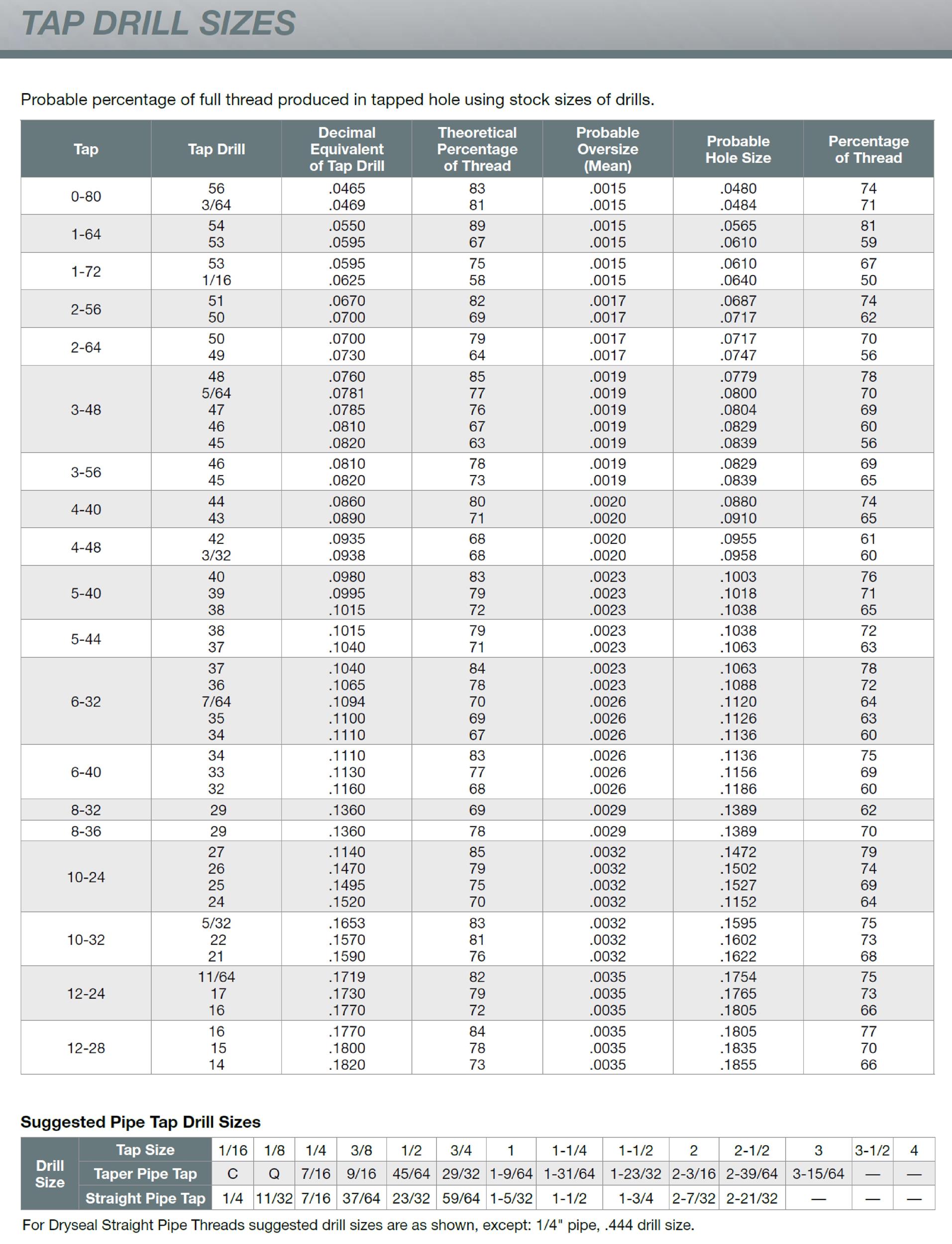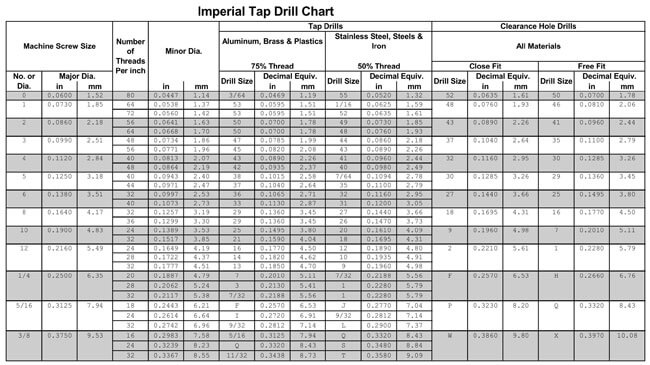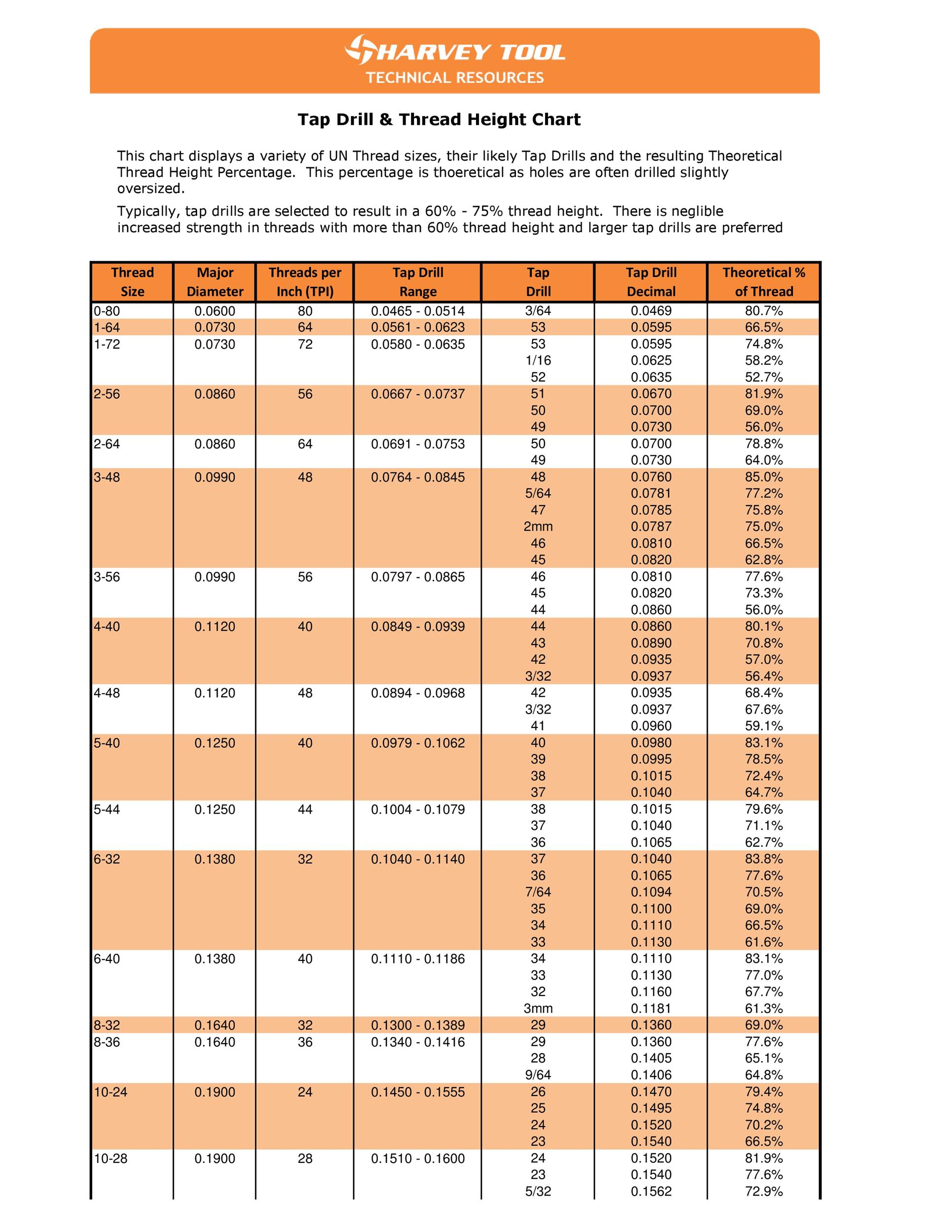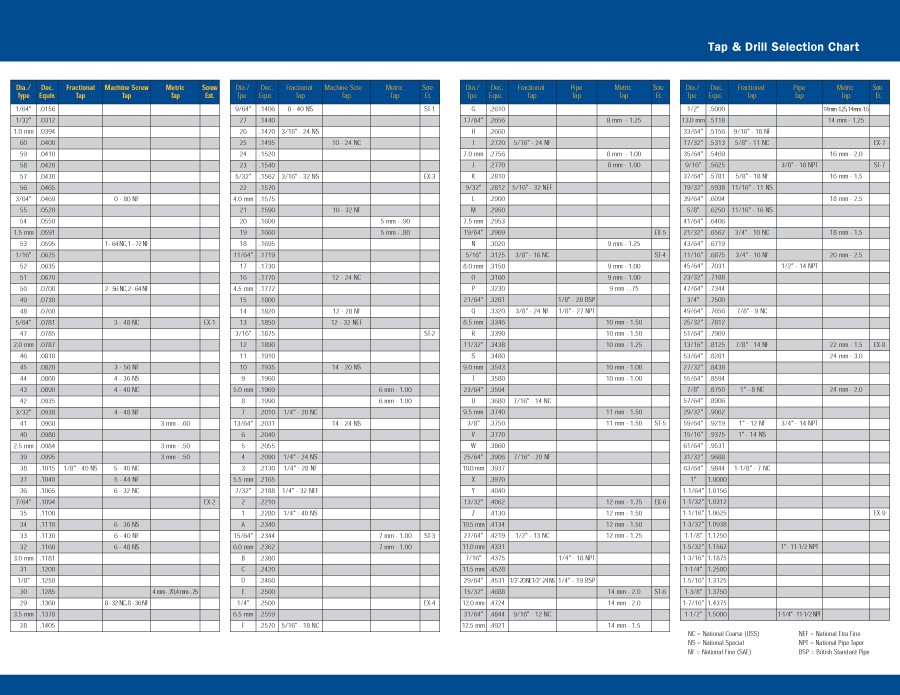When it comes to precision drilling, having a tap drill chart on hand is essential. This useful tool provides valuable information about the correct drill sizes for creating tapped holes. Whether you are a professional machinist, engineer, or simply someone who enjoys DIY projects, understanding tap drill sizes is crucial for achieving accurate and reliable results.
 Tap Drill Chart: Your Guide to Accurate Tapping
Tap Drill Chart: Your Guide to Accurate Tapping
If you are new to tapping, a tap drill chart serves as an excellent reference point. It helps you determine the right drill size to create an initial hole before tapping the threads. By using the correct drill bit, you ensure that the tapped hole perfectly accommodates the desired thread size.
One of the first things you’ll notice about tap drill charts is the vast array of sizes they depict. This is because different thread sizes require specific drill sizes to ensure proper clearance and threading engagement. A comprehensive tap drill chart provides a range of drilling options for various thread sizes, from small fine threads to large coarse threads.
 How to Use a Tap Drill Chart
How to Use a Tap Drill Chart
Using a tap drill chart is relatively simple. First, identify the thread size and pitch of the hole you intend to tap. Locate the corresponding row on the tap drill chart that matches your thread size. Once you have identified the correct row, look across the chart to find the recommended drill size for that specific thread.
For example, if you are working with a ¼-20 UNC thread, find the row that corresponds to ¼-inch threads and follow it horizontally to locate the recommended drill size. The chart will indicate the drill size (in inches or millimeters) that should be used for creating a pilot hole.
 Importance of Accurate Tapping
Importance of Accurate Tapping
Accurate tapping is crucial for various industries, including automotive, aerospace, and manufacturing. Properly tapped holes ensure the secure fastening of components and guarantee the integrity of assembled parts. Incorrectly tapped holes can result in weak threads, reduced stability, and potential thread failure under load.
By using a tap drill chart, you can minimize the risk of encountered problems. Tapping holes with the recommended drill size ensures that the threads are neither too tight nor too loose. Proper engagement between the bolt or screw and the threaded hole optimizes strength and reduces the likelihood of stripping or overtightening.
It’s worth noting that tap drill chart templates are versatile and can be created in different formats. They can exist in Excel spreadsheets, PDFs, or even as printable charts for easy access in the workshop.
 Conclusion
Conclusion
Whether you are working on a personal project or handling professional machining tasks, having a tap drill chart on hand is an invaluable resource. These charts simplify the process of identifying the correct drill size for tapping holes, ensuring consistent and reliable results.
Remember to always refer to a reputable tap drill chart when undertaking any tapping project. By doing so, you will save time, improve accuracy, and increase the longevity of your threaded connections. So, go ahead, grab a tap drill chart, and explore the world of precise tapping!